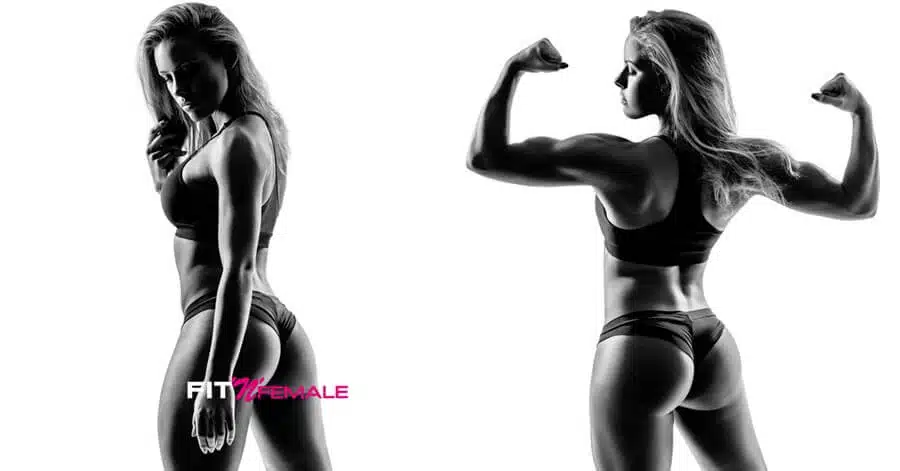People who want to lose weight usually measure their success with the help of a simple bathroom scale. Not least the focus on weight measured in kilograms, which is widely publicized in many lifestyle magazines, has led to the scales becoming almost like the Holy Grail for measuring weight loss. However, anyone who has ever been more serious about losing weight knows that the scales are not your best friend, but your worst enemy.
Of course, at the beginning, success can be tracked day by day, as the value on the display shrinks noticeably. After a few weeks at the latest, however, progress comes to a standstill, which leads to many people who want to lose weight throwing their concept overboard, resorting to extreme calorie deficits or even abandoning their plan altogether. But this is not necessary, because weight loss is not so important. Just remember that you get rid of a lot of water in the first few days or that you build up additional muscle mass through training, which in turn binds water itself. Of course, it also makes sense to step on the scales from time to time. However, there are much more sensible methods with which you can measure your progress.
1 - Take photos of yourself regularly
As uncomfortable as it may feel to take a snapshot when you're feeling fat and completely out of shape, it makes sense. The well-known saying "a picture is worth a thousand words" applies not only to art and the media, but also to tracking your progress. While your weight on the scales can fluctuate by 1.5 kilograms from one day to the next and is therefore not a reliable indicator, pictures don't lie. However, it is important that you always take the pictures a few days apart so that the progress is really noticeable, because without this interval you will not notice how your body fat percentage slowly reduces and your muscles peel out from under the layer of fat. After all, you see yourself in the mirror several times a day. It therefore makes sense to always allow five to seven days to pass between two photos. However, make sure that you always take the photos at the same time of day and that you adopt the same posture in the same lighting conditions. Otherwise the visual impression may be distorted. To capture the change as accurately as possible, you should also take one photo from the front, one from the back and one from the side. This way, after a few weeks you will experience an incredible "aha" effect, even if the scales don't suggest it, and will give you a further boost of motivation to stick to your program.
2 - Check your strength levels regularly
Instead of always focusing on falling numbers in the form of body weight on the scales, you should concentrate on rising numbers - namely in the form of your strength values. Even if there is still a misconception in parts of the fitness community that low weights and many repetitions are the order of the day when dieting, the opposite is actually the case. Because only if you train hard will you maintain as much muscle mass as possible during a diet phase or even build up additional muscle. The latter is especially true for beginners who have not been training for very long. If you want to find out whether you are still on the right track, you should take a close look at your strength values in basic exercises such as squats, deadlifts, rowing, pull-ups and bench presses at least once every two weeks. Write down your performance each time you do 10 repetitions with a certain weight. If your performance increases, you know that you are on the right track, even if the scales say otherwise.
3 - Use a tape measure
The tape measure is an excellent tool that you can use to completely replace your scales or supplement their results. As with taking photos, the regularity of the measurements is also important here. It is best to use an app or keep a classic paper diary in which you record the circumference of your chest, thighs, upper arms, waist and stomach. In practice, weekly measurements have proven to be ideal. However, you also need to pay attention to a few points when measuring your circumference with a tape measure. The most important thing is, of course, that you always take the measurements in exactly the same place, as two to three centimetres further up or down can significantly distort the result. To smooth out measurement deviations, you should therefore take three measurements from each measuring point and enter the average measurement as the result. Furthermore, it is important to always measure at the same time of day, especially when determining abdominal and waist circumference, as the circumference can change significantly during the course of the day due to food intake and digestion. The ideal time to measure is in the morning before breakfast.
4 - Measure your body fat percentage
Of course, since the main focus is on fat loss and not weight loss, measuring progress in this area should also be a priority. However, forget about any scales that have a half-baked function for measuring body fat, as these usually only provide very inaccurate results. On the other hand, you will get very precise results if you use a body fat caliper, which you can use to measure the thickness of the fat layer under the skin. With the help of the evaluation tables provided, you can then see how high your body fat percentage is. In order for the results to be as precise as possible, it is of course necessary to take measurements at several points on your body and also to take each measurement three times and average the results. Ideally, you should get someone to help you with the measurement, as some measuring points are difficult to reach on your own. Even though this method naturally involves a little more effort, it is the most precise method that clearly shows you whether you are on the right track. So if your body fat percentage is steadily decreasing, you can safely ignore the figures on your scales.
5 - Try on your old clothes
Last but not least, a really very simple method that you should of course not use as the sole measure, but only as a supplement. Whenever you feel like you're not making any progress, you should try on your old jeans or T-shirts that you were wearing before you started your diet. There is hardly anything more motivating than seeing how much progress you can make within a few months. Of course, it is of little use repeating this process every week. Therefore, if necessary, only pull "jeans jokers" every six to eight weeks.
Conclusion
As you can see, there are several methods for measuring your progress that are much more suitable than your scales. However, as each of the methods presented is not always completely error-free, you should always use several methods at the same time to obtain precise results. For example, the combination of photos, measuring tape and regular body fat percentage measurements is highly recommended.










